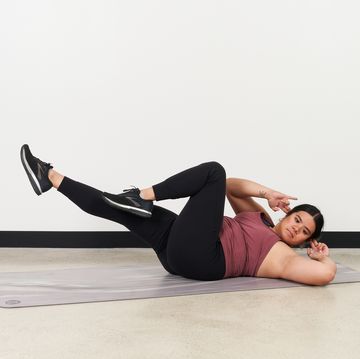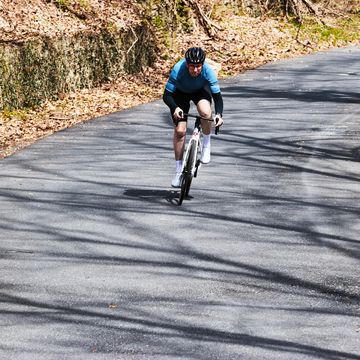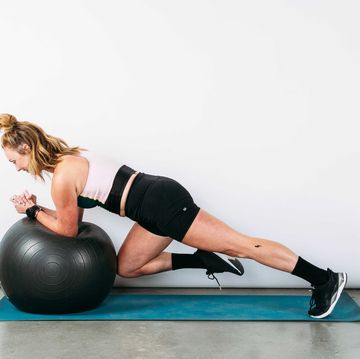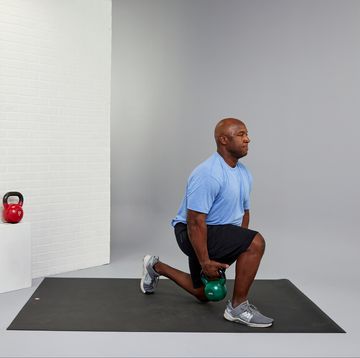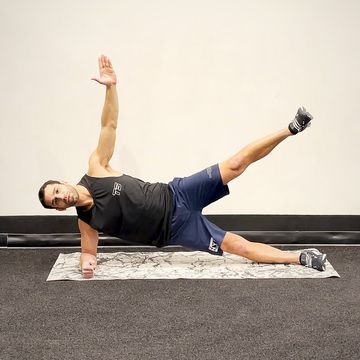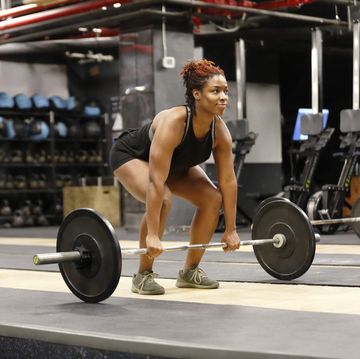Some fitness advice is repeated so often it seems like common knowledge at this point—supposed facts people don’t even question. Perhaps one of the best examples is “training to failure.” However, now experts are calling this established strategy into question, and suggesting it may even be harmful.
“I’m always happy to see reason triumphing over fads,” says Daniel Fulham O’Neill, M.D., an orthopedic surgeon, sports psychologist, and author of Survival of the Fit. He tells Bicycling that doing any activity “to failure” is generally a bad idea.
“What you’re asking to fail is the energy system in your muscle cells,” he explains. “This is great on paper, but the risk of connective tissues like tendons and ligaments also failing is too significant to make this a good idea for the average runner, cyclist, or athlete.”
Here’s a look at the limitations of training to failure, and what to consider instead.
What it Means to Train to Failure
When you lift to failure, that means in order to build muscle and increase strength, your resistance training should focus on bringing your muscles to the point of so much fatigue that you can’t do even one more rep. Then, you rest to let muscles recover and do another set, again getting to the extreme fatigue point.
Proponents of this type of training believe it recruits more muscle fibers, which means your muscles get larger as well as stronger. There’s also the idea that this stress on the metabolic system releases chemical signals that promote muscle growth, and that certain hormones are released that optimize the whole process.
“There’s no question that taking sets to absolute failure is better for muscle and strength gain than breezing mindlessly through your workouts,” Mike Matthews, C.P.T., author of Muscle for Life, tells Bicycling. The gymgoer who regularly pushes themselves as hard as they can will see more benefits than those who don’t (to an extent), but “that said, training to failure isn’t necessary for building muscle and strength,” he adds.
A study published in the European Journal of Applied Physiology in 2017 shows training to failure causes disproportionately more fatigue, soreness, and wear and tear than training to near-failure. Matthews says that means the more often you train to failure, the harder it can become to optimize your volume—sets or reps per week—and intensity or load for maximum muscle and strength gain.
“You simply won’t have it in you to train hard enough week in and week out [if you lift to failure every session],” said Matthews. “In time, this can hinder progress and even lead to a plateau.”
Another downside to training to failure is that it often causes your technique to break down, he adds. The more our muscles fatigue, the more difficult it is to feel our muscles working properly and performing moves with good form. This is especially true with exercises like the deadlift, squat, and military press, which he said are hard to do properly when pushed to the point of absolute failure. The result is that your last couple reps tend to get sloppy, and when that happens, it doesn’t take much to tweak a muscle or joint.
Making the Pivot Away from Training to Failure
If you decide not to train to failure, what’s the alternative? Well, for one, you can train to fatigue, rather than total failure—your muscles will feel worked and tired, but you can still maintain proper form through every exercise.
Also, you can still focus on progressive overload in other ways that are more supportive to your body and your form, according to Anna Victoria, C.P.T., creator of the Fit Body app. She tells Bicycling that examples include:
- Time under tension, which means holding weights in a lift for longer, which you can do by slowing down the tempo
- Isometric holds, when a muscle is held in static contraction, such as in a plank pose or pausing at the top of a pull-up
- Increasing overall volume with lighter weights but more reps
- Increasing frequency through more sets and/or how many days a week you lift
All of these provide ways to place your muscles under additional beneficial stress without needing to train to failure, she says.
Another factor in seeing results is your experience with strength training, says Michelle Wong, C.P.T., a trainer at Life Time in Georgia. If you’re just beginning with a weight-training program, it’s very unlikely that training to failure is the best way to mix this in with your cycling workouts, she tells Bicycling.
“Most beginners will want to start slowly with light weights and higher repetitions, so that the brain develops the neuromuscular connections for each movement pattern,” she says. “The brain takes even longer to recover than the muscles, so the reps will actually start to teach the brain how to move the body better.”
Notice the Red Flags of Overtraining
No matter what type of strength-building workout you’re doing, it’s important to know when it’s not working, particularly if you’re following the train-to-failure route.
“If you have any nagging pains, inflammation, tightness, or swelling consistently somewhere, these are red flags that no amateur athlete should be dealing with on a regular basis,” says O'Neill. “Also, are you finding excuses not to go to the gym? Listen to that, it’s telling you something."
Wong added that other indications of overtraining—which can definitely happen if you push to failure too much during your strength workouts and then hit the saddle—include digestive discomfort, energy swings, water retention, menstrual irregularities, brain fog, and changes in sleeping patterns.
Most of all, O’Neill says there’s one overriding question that should drive your training: Are you having fun? If strength training isn’t your groove, you may not approach it with joy in your heart, but you should at least feel satisfied and accomplished when you’re done with a session.
“Even pro athletes have trouble making themselves train if they are miserable,” he says. “Training to failure is tough mentally as well as physically. You don’t want to dread going to the gym."
Elizabeth Millard is a freelance writer focusing on health, wellness, fitness, and food.


